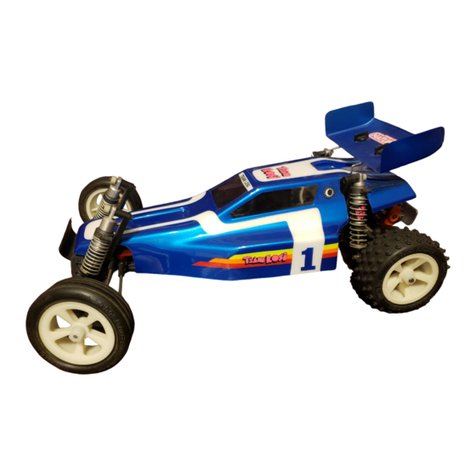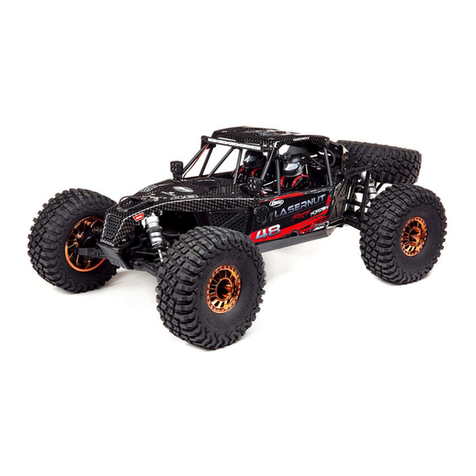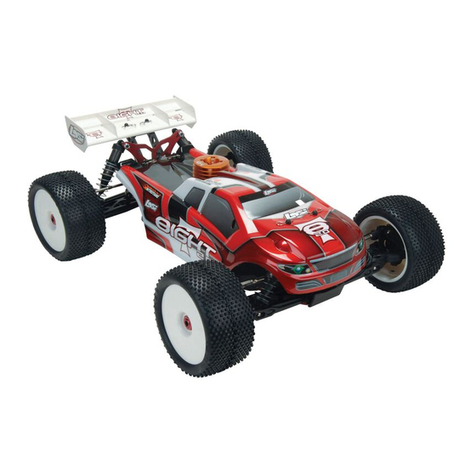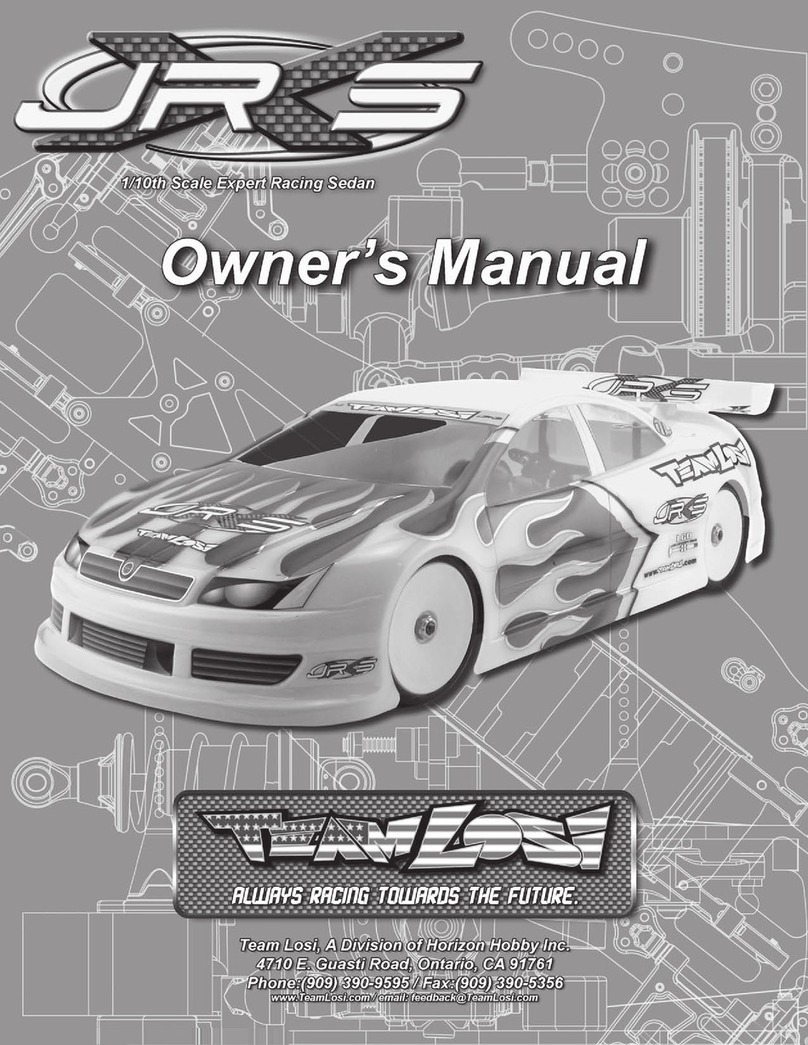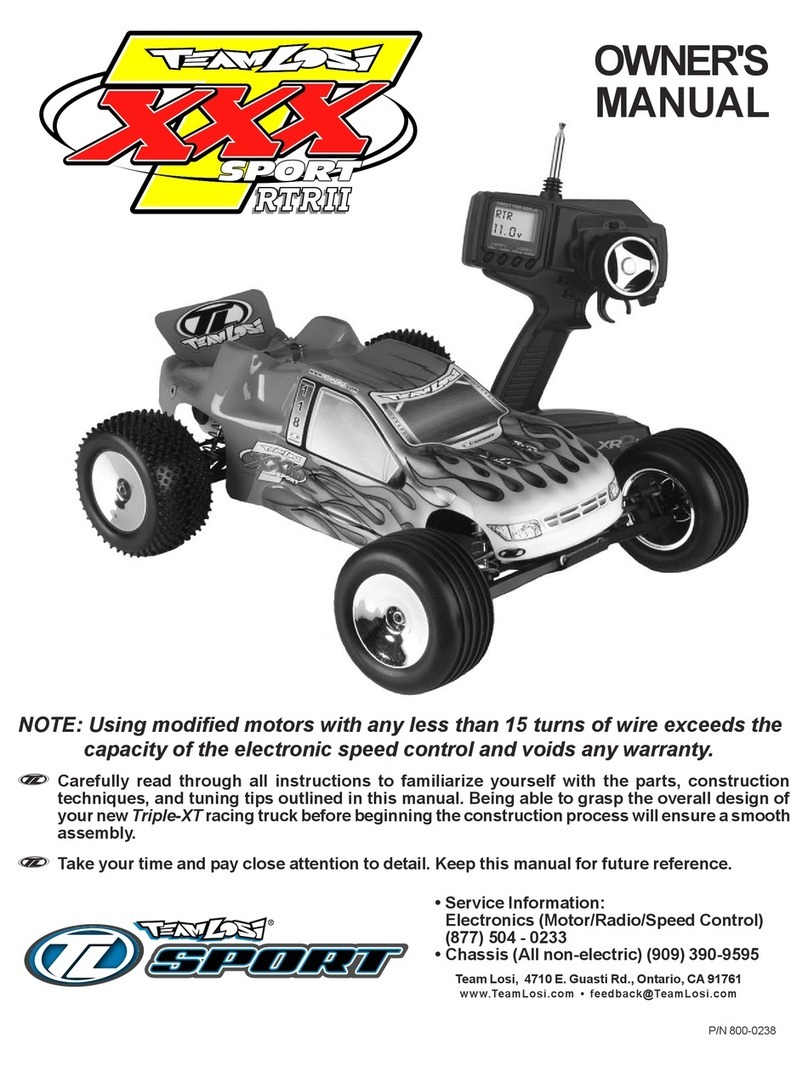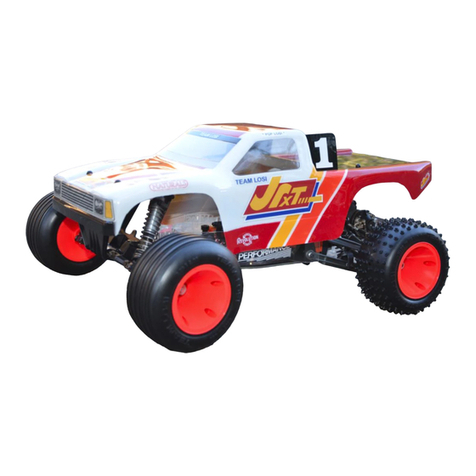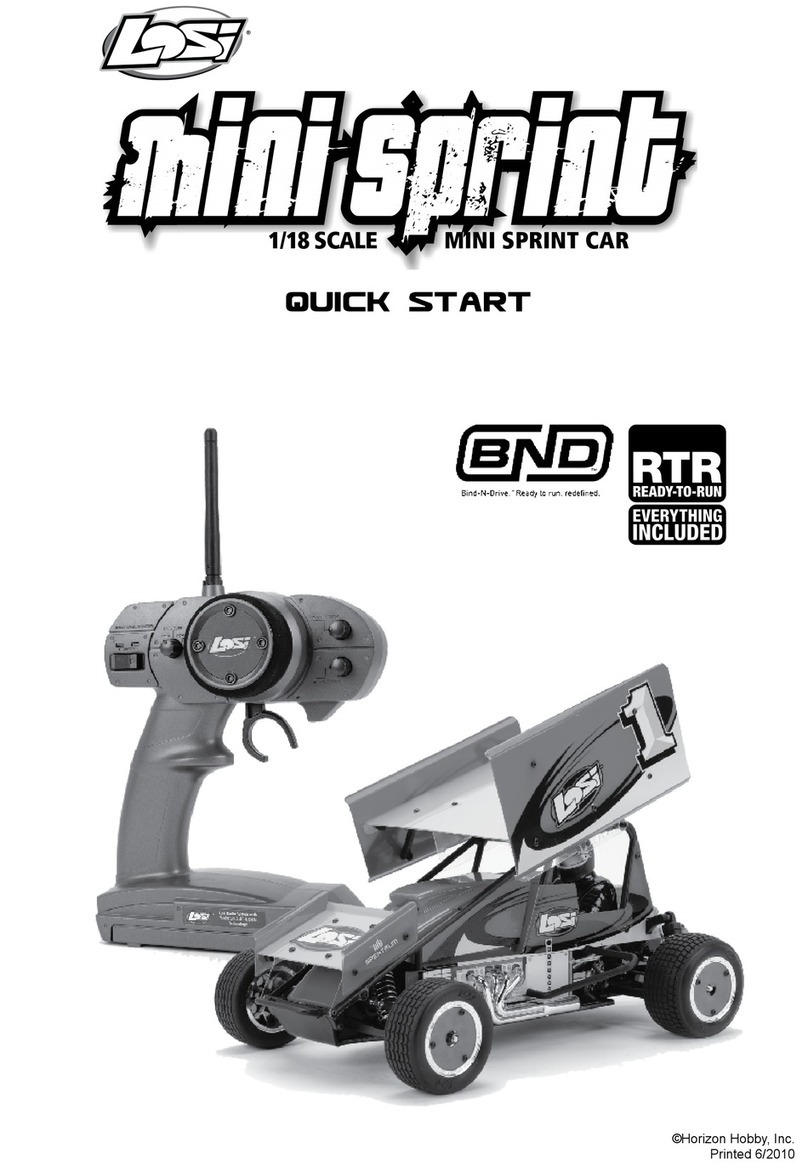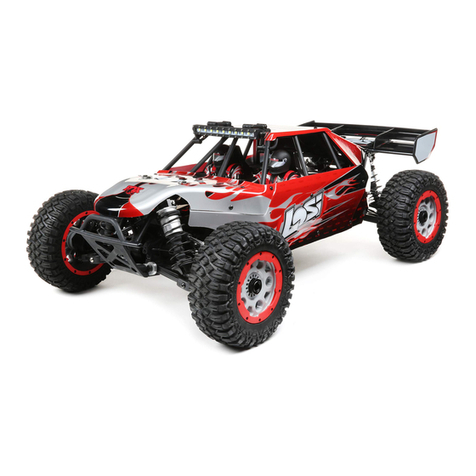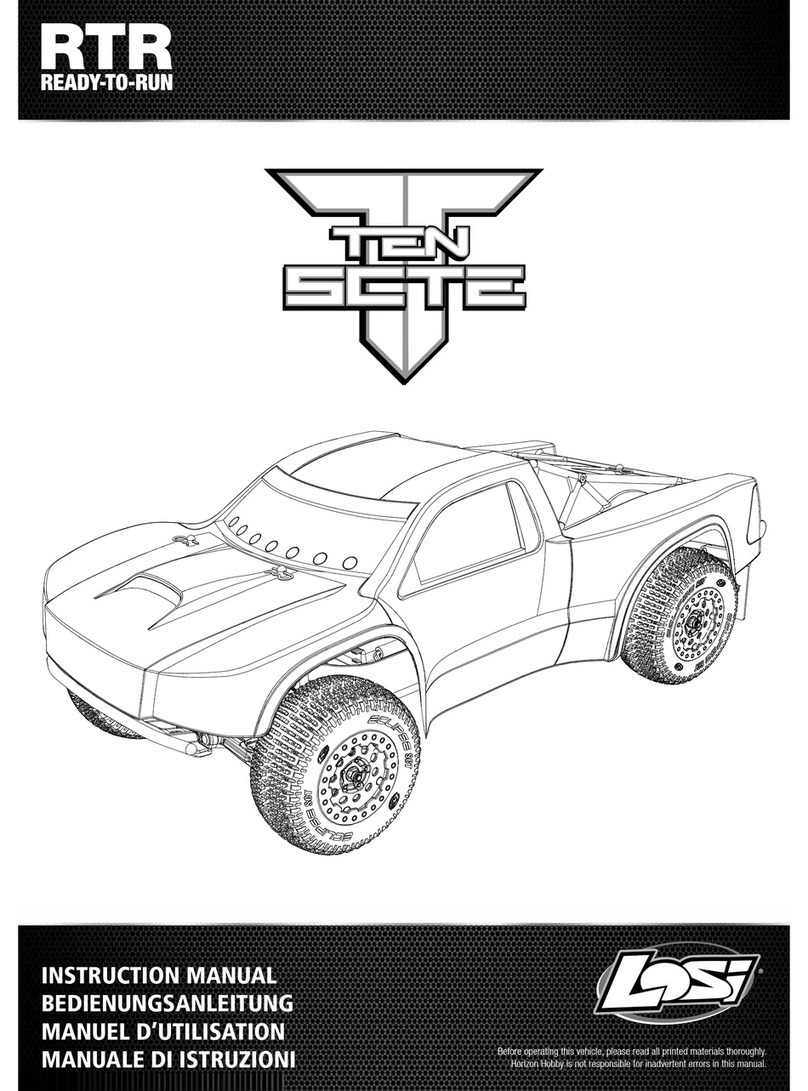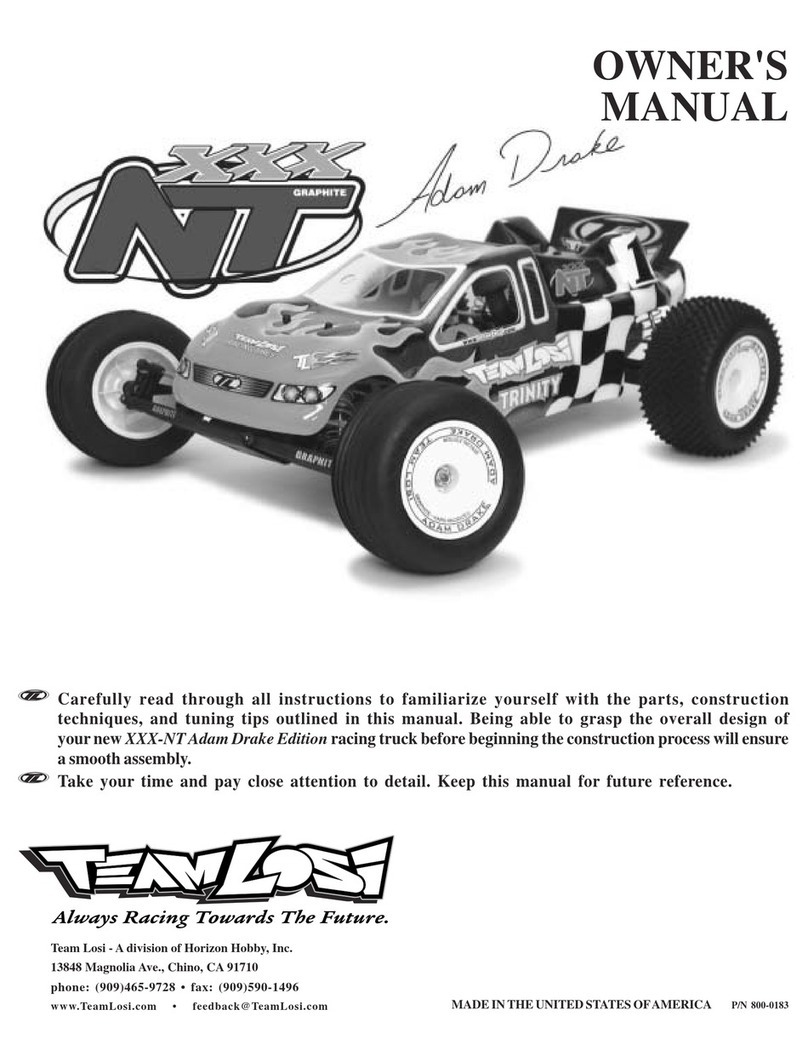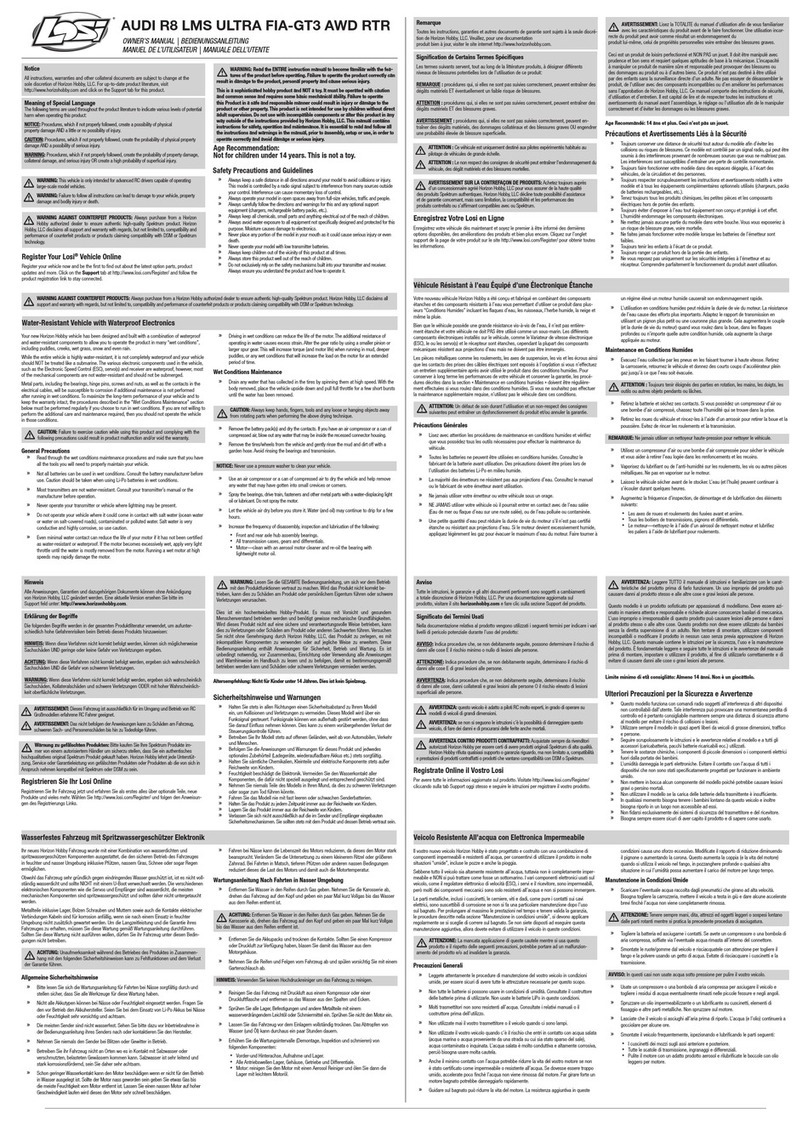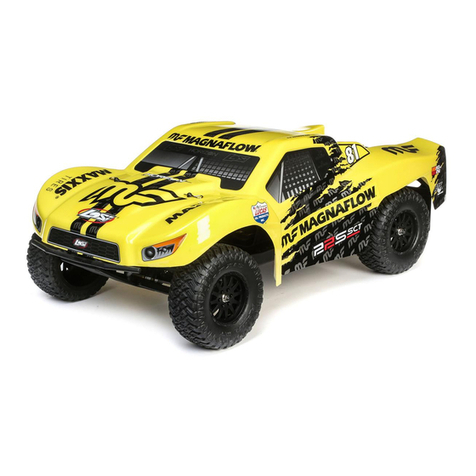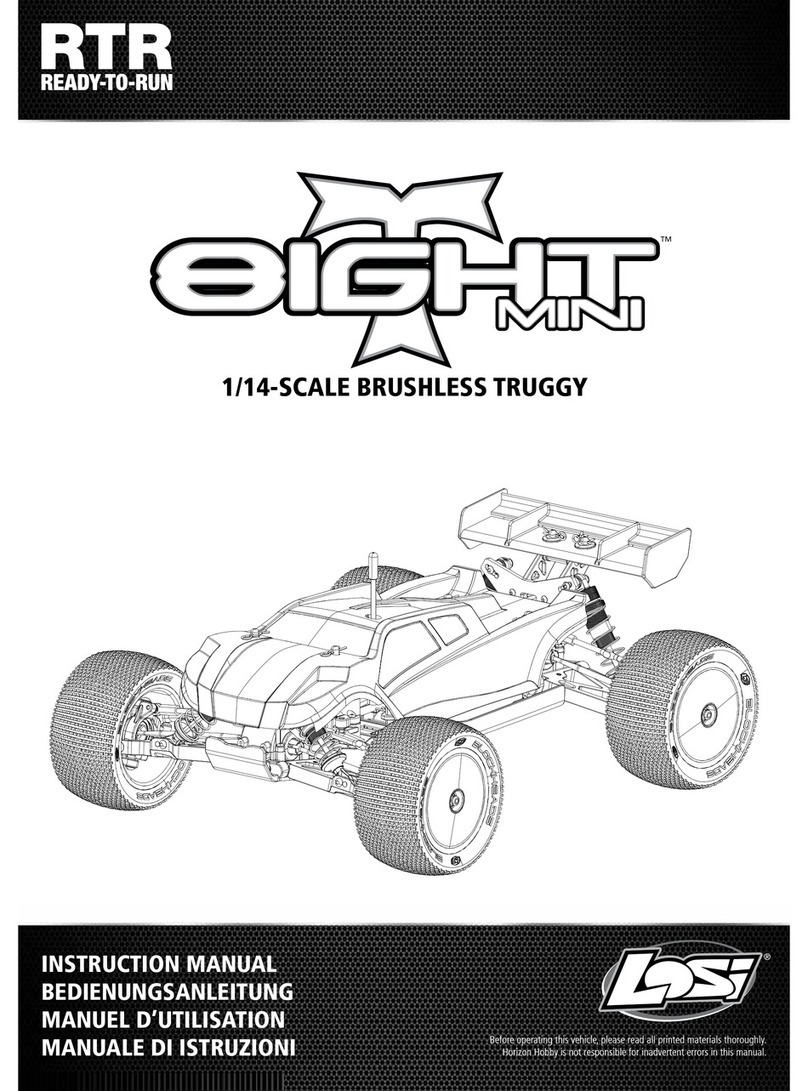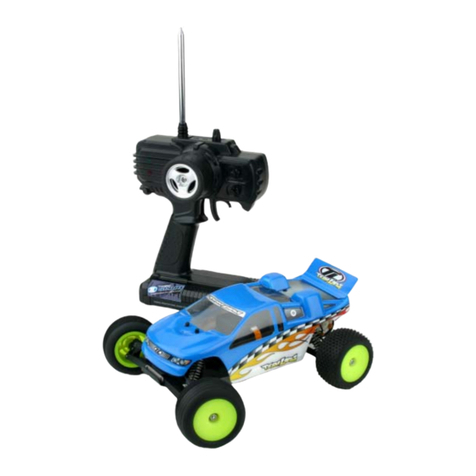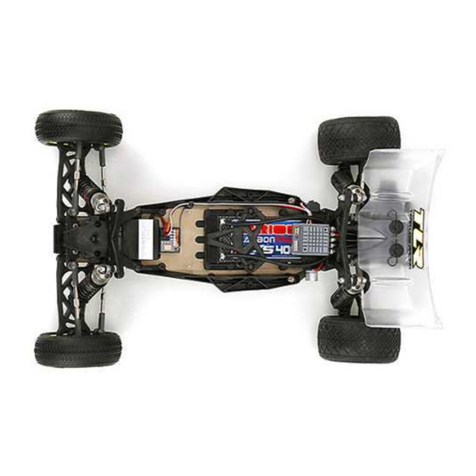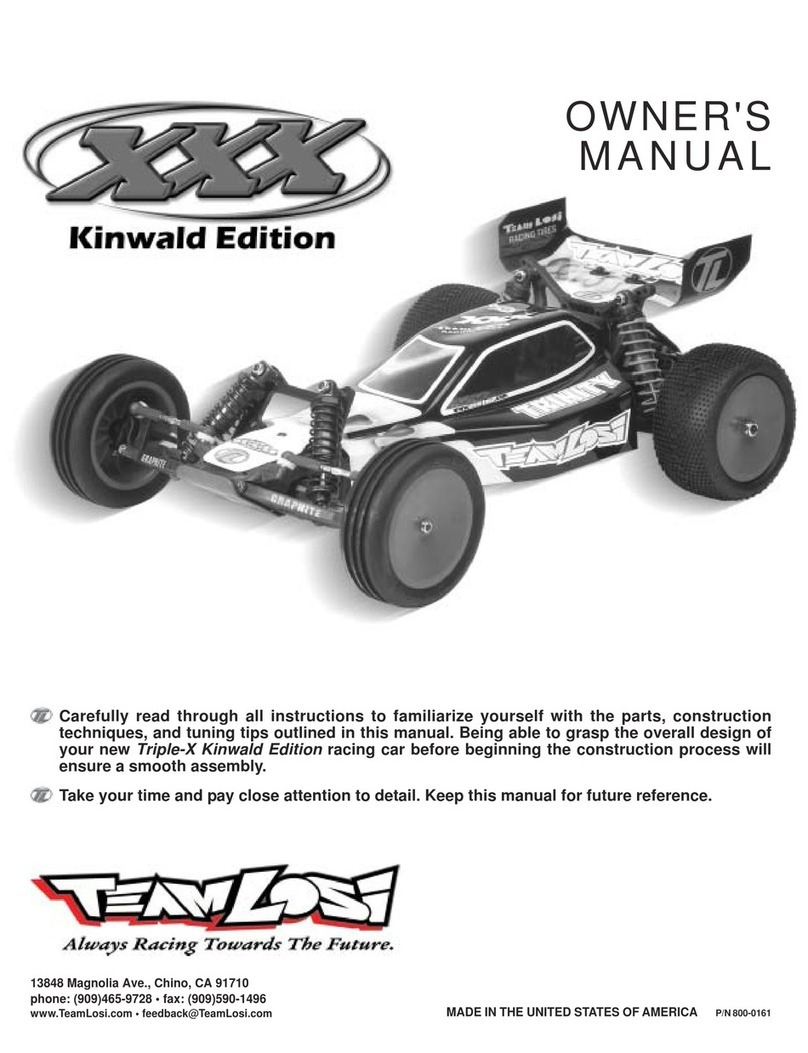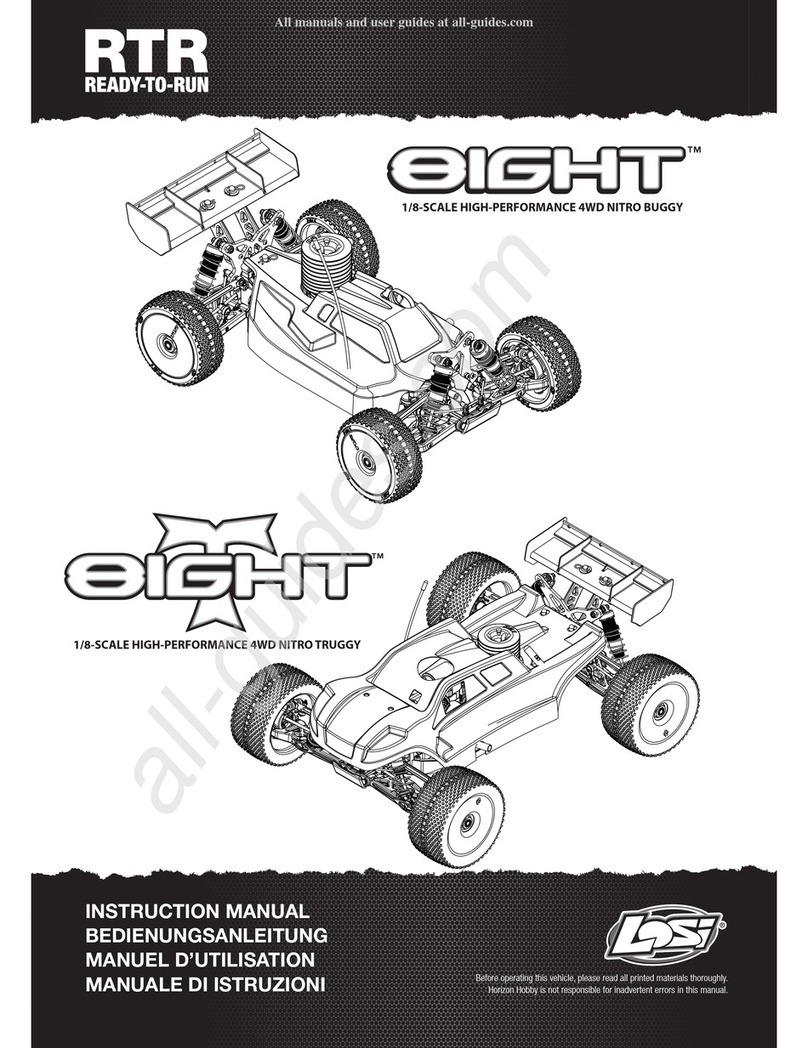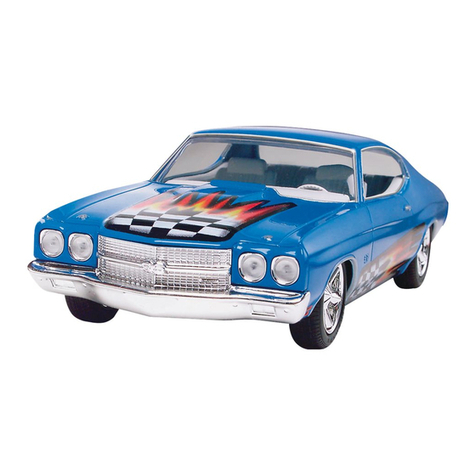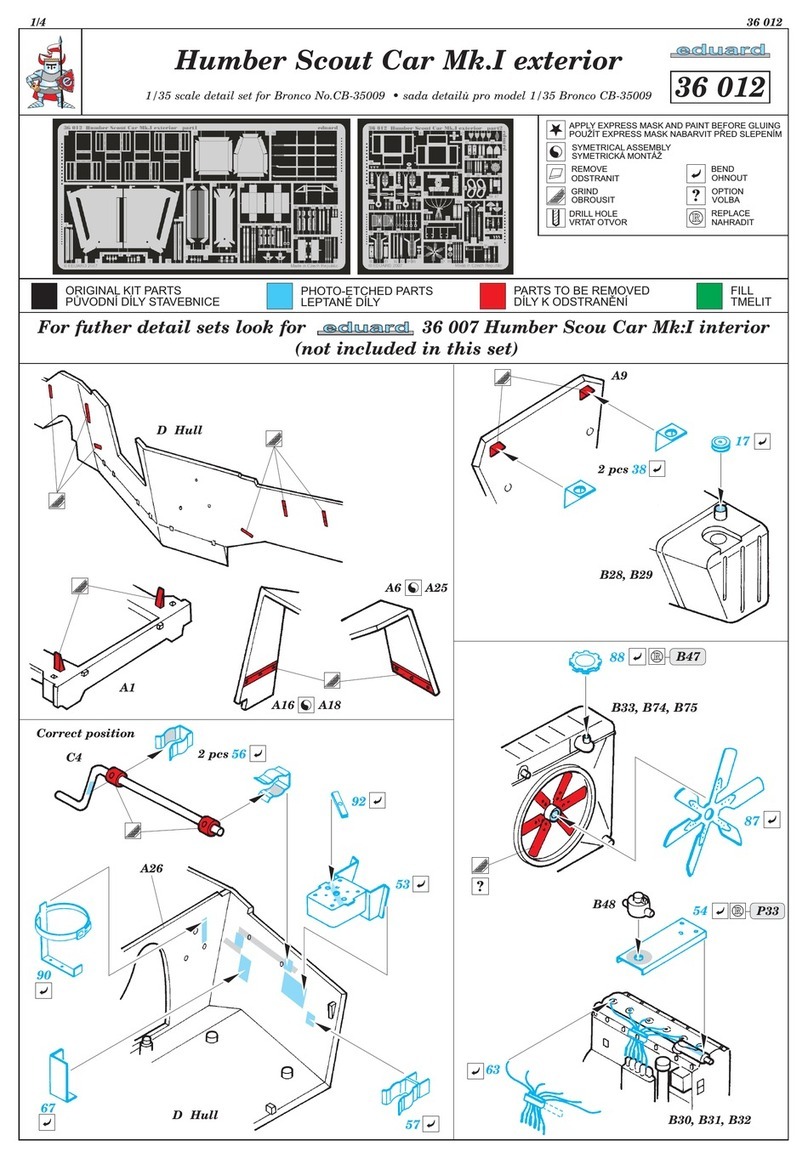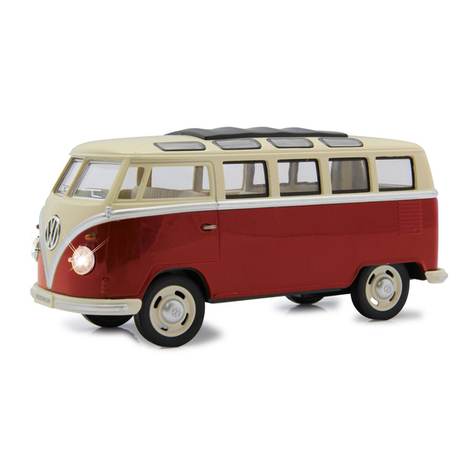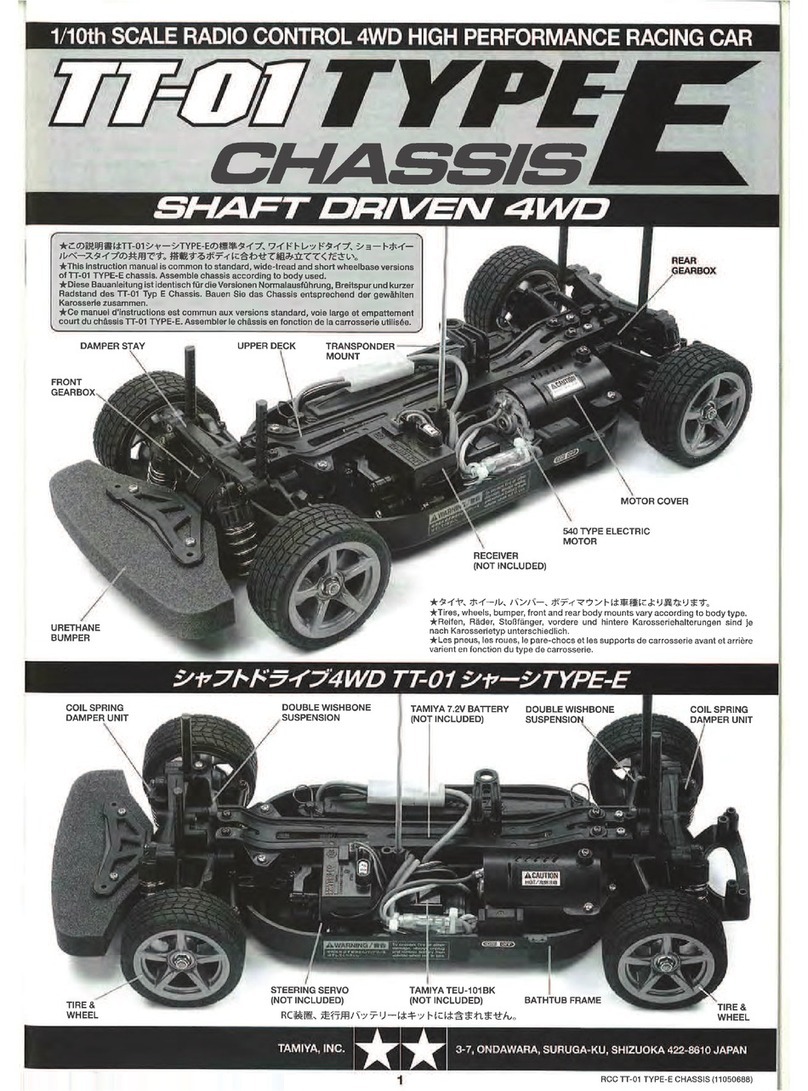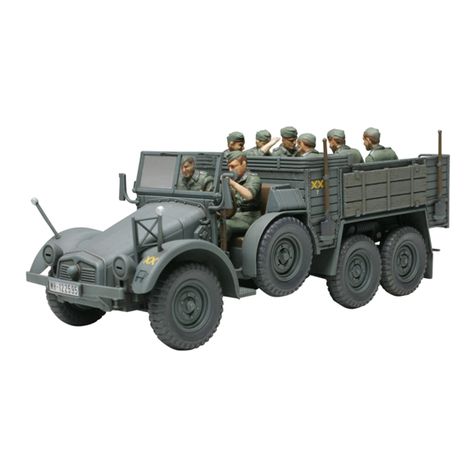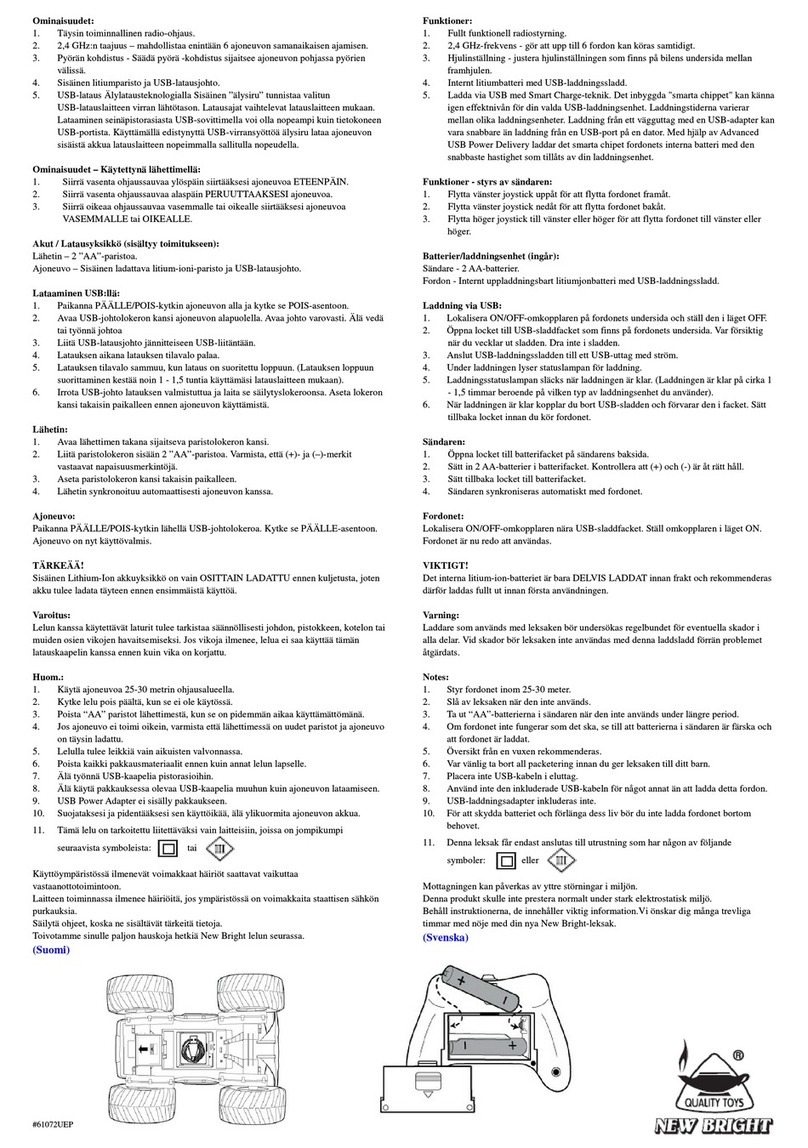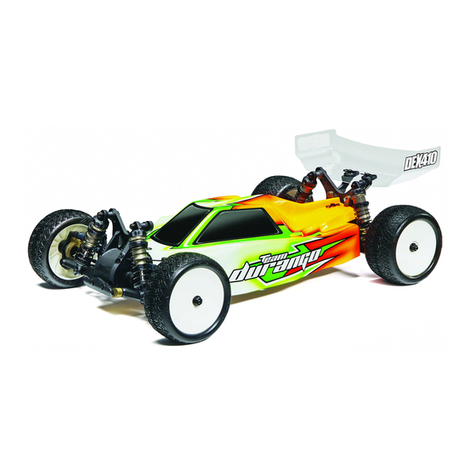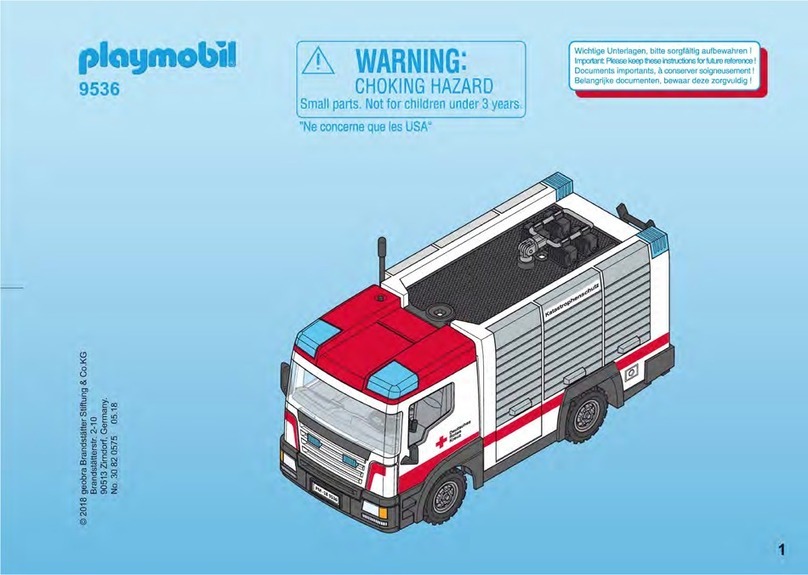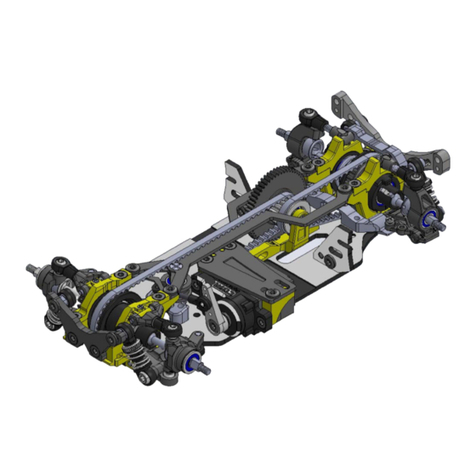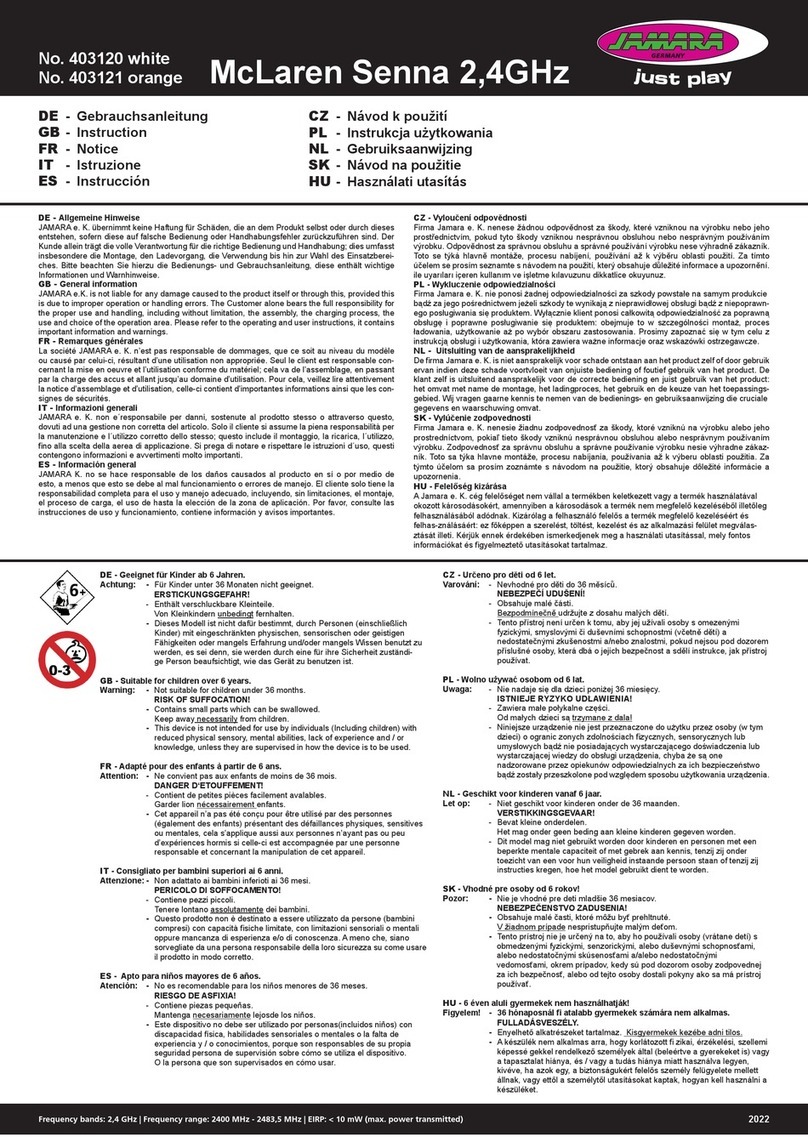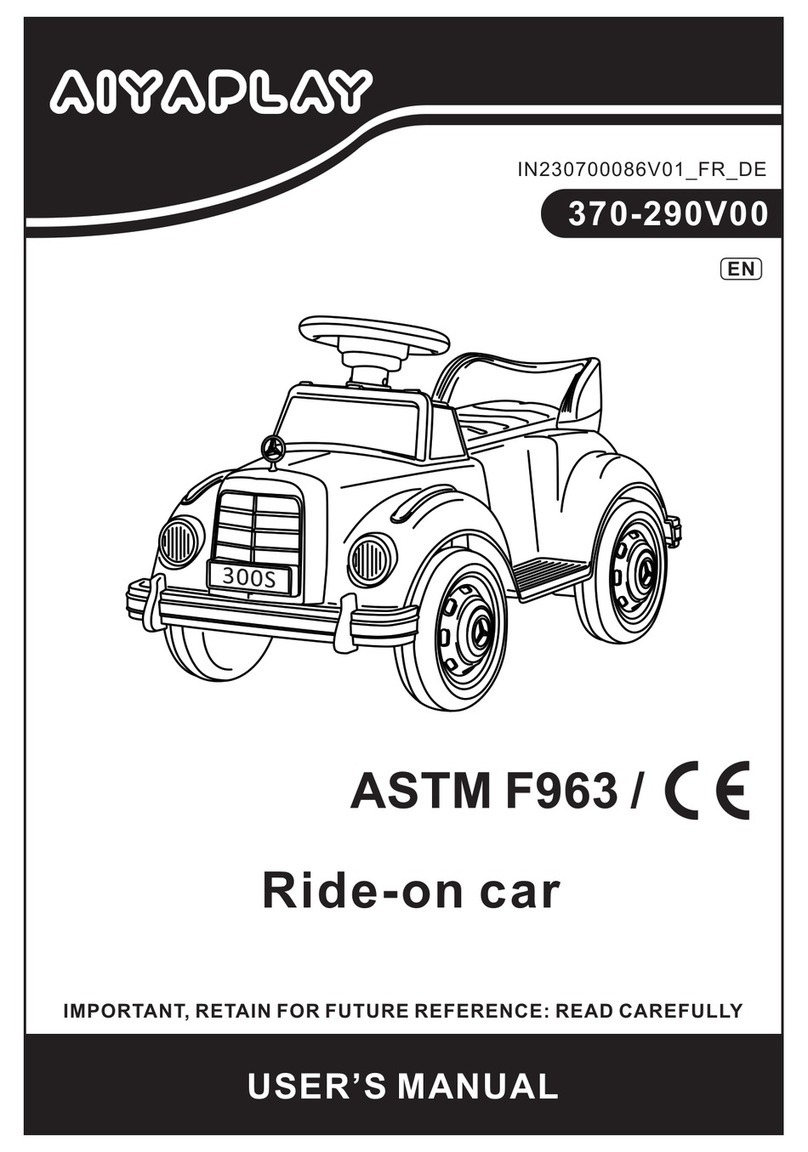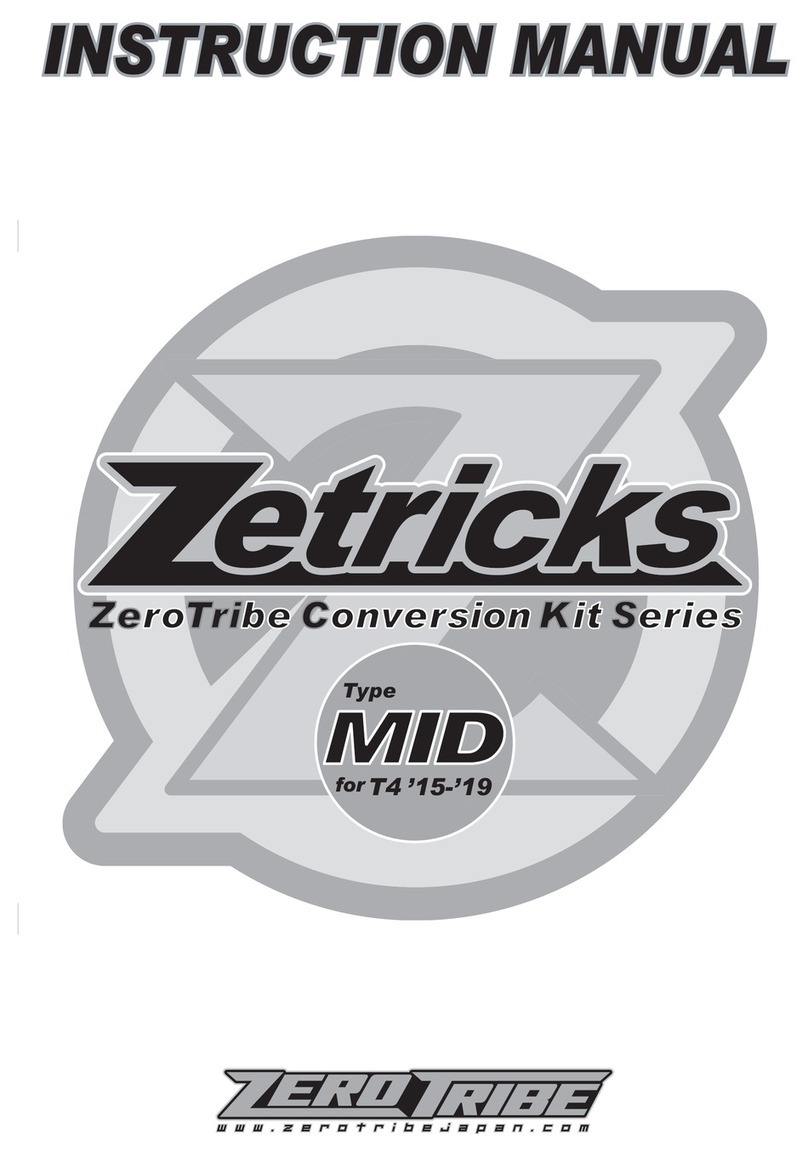
Visit www.modelflight.com.au for more information and spare parts online.
The following are simple adjustments and easily maintained settings that will assure proper opera-
tion and performance. Since the Mini-T Pro comes from the factory with optimum settings, we sug-
gest !rst-time R/C drivers leave these as they are and simply maintain them as necessary. Only
after gaining experience should new drivers try experimenting with different settings.
Chassis Tuning
The Mini-T Pro has several adjustments available to you for tuning the performance for your
needs. Although there are multiple shock positions and camber link locations provided, as noted
above we have built the model with the best overall settings. The following are simple adjustments
and easily maintained settings that will assure proper operation and performance. It is advised that
when making any adjustment you do so in small increments and always check for other parts of
the chassis that are affected.
Steering Rate
The motor screws should be slightly loose. Slide the motor forward allowing the
pinion gear to mesh with the spur gear. Snug (not tight) the bottom motor screw
and try rocking the spur back and forth. There is a slight bit of movement before
the motor is forced to turn over. If not, pull the top of the motor back slightly and
recheck, there should be a slight bit of movement. If there is too much slop
between the gears push the top of the motor forward. When set properly the
wheels can be spun forward freely with very little noise. Make sure to tighten
both motor screws and replace the gear cover before running.
NEVER Let your differential slip!
Follow the instructions below for proper operation and adjustment
Ball Diff/Slipper Adjustment Instructions
Always make sure your slipper will slip before the diff, as this will diminish the load on the dif-
Your transmitter may be equipped with a steering rate control. This
feature allows you to adjust the amount the front tires move when you
turn the steering wheel. This is really helpful when you are on slick as
well as high traction surfaces. If your Mini
-T Pro turns too sharply
and/or spins out easily, try decreasing the steering rate. For sharper
or additional steering, try increasing the steering rate.
Camber
Camber is the angle of the tires to the racing surface when viewed
from the front or rear of the truck. You want to keep both the front
and rear tires straight up and down or leaning in at the top very
slightly. If you are running on carpet or similar high traction sur-
faces you may !nd leaning them in a bit more helps. This adjust-
ferential and transmission. The diff should never slip. Hold the right tire and the spur gear in one
hand and rotate the left tire. As you rotate the left tire, the slipper plate, and shaft should turn. This
means the slipper is slipping before the differential. If the slipper shaft is not turning, your differen-
tial is slipping. You must either tighten the diff and/or loosen the slipper and recheck. To tighten the
diff, remove the left side driveshaft and use a .050” Allen wrench and turn the diff screw clockwise
in one-hour increments and recheck as noted above until it no longer slips. Any time you tighten
the slipper you should check the diff as noted and tighten if necessary.
Slipper Adjustments
The Mini-T Pro is equipped with a Double Disk slipper device that
offers both traction control and protection for the transmission. The
slipper is primarily used to help absorb sudden impacts on the drive
train due to landing big jumps or when using more powerful aftermar-
ment is made with the turnbuckle links that extend from the front
or rear bulkhead to the spindle carrier or rear hub. The Mini-T Pro
is equipped with adjustable Titanium Turnbuckles that if turned
one way (using the provided wrench) get shorter and if turned in
ket motors and/or battery packs. Additionally, it can be used to smooth
out the "ow of power to the rear wheels and limit wheel spin when
running on extremely slick surfaces. Adjustment is made by removing
the access plug in the gear cover and turning the 3mm adjustment
Slip
the opposite direction get longer. Making these shorter increases the camber and lean-in of the tire
longer decreases the camber.
Toe-In
This is the relationship of the left and right side tires to one
nut clockwise (to the right) to reduce the slip or counterclockwise (to
the left) to increase the slip (Figure 3). When adjusted properly
should be able to hold the rear tires !
rmly and barely be able to push
the spur gear forward with your thumb (Figure 4). To track test, turn
another. Ideally, you want the front of the tires to be pointed
inward toward each other just slightly when viewed from
above. This makes the model track straight and stable. This
is controlled with the adjustable steering rods on either side.
As you make them longer you will increase the toe-in and
vice versa.
the Mini-T on and place it on the ground.
allowing it to roll freely, punch the throttle.
The slipper should slip no
more than an inch or two as it accelerates. With a 5 or 6 cell battery
pack it should slip just a little. Make sure you replace the gear cover
This is the height the chassis sits and runs at. There are spring spacers included with the Mini-T
Pro that, when installed between the shock top and spring, will increase the pre-load on the spring
and raise the chassis. You may want to try this when running on extremely rough surfaces.
